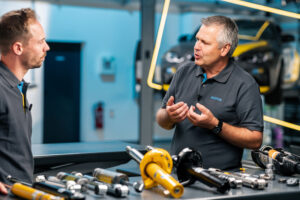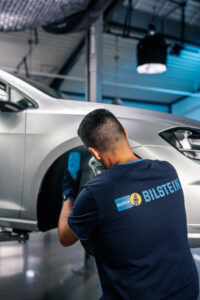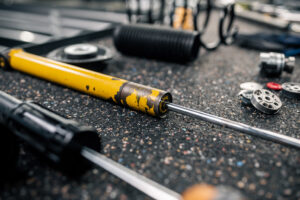PROMOTED CONTENT ON BEHALF OF BILSTEIN
BILSTEIN video gives tips on how to avoid mistakes when installing shock absorbers
The experts from the BILSTEIN Academy regularly provide independent garages with valuable practical tips and assistance in the form of entertaining videos. In the second episode of “Suspension Fundamentals – powered by BILSTEIN Academy”, the suspension professionals give specific tips on how automotive professionals can avoid mistakes when installing shock absorbers. The video, linked here or the following text explain what needs to be considered.

Mistakes in the workshop are annoying. In the best case, they only disrupt the processes in the workshop. In most cases, however, they also cost money. Quite often, they also annoy customers. In shock absorber and suspension service, however, mistakes can be avoided. When it comes to problems with the installation of springs and shock absorbers, the BILSTEIN Academy is repeatedly confronted with very similar questions. In the second video of “Suspension Fundamentals – powered by BILSTEIN Academy”, Rainer Popiol, head of BILSTEIN Academy, and Mustafa Yavuz, who is working at the BILSTEIN Technical Support for workshops, clearly point out what really matters. (If you would like to delve deeper into the subject, you can find information on the training courses offered by the BILSTEIN Academy here).
Rainer Popiol knows: “Sometimes a small mistake creates a big effect.” Especially when the wrong

tools are used. “One problem, for example, is elongated threads on the piston rod,” says Rainer Popiol. “This is a typical case when using an impact wrench.” Then too much torque is applied to the thread. Popiol warns of another problem in this case: “This can also lead to the piston rod starting to rotate. In the actual shock absorber, the working piston is fixed to the piston rod with a nut. In the worst case, this can loosen or also tighten too much.” Both is bad, because the seal will be damaged and oil leaks out of the damper. The use of gripping pliers or water pump pliers is also strongly discouraged. According to Popiol, this can also damage the surface of the piston rod. The same is true if the shock absorber is driven without a protective tube or if the later has come loose. The problem: Damage to the chromed surface of the piston rod can lead to a loss of oil when it passes through the damper’s closure package.
Serious damage to the shock absorber can also occur if it is clamped in a vice. “This squeezing can damage the running surface of the working piston,” knows Rainer Popiol. In addition, new shock absorbers must be installed tension-free, i.e. with the wheels in a compressed state. The vehicle

must therefore stand on the ground. The wheel alignment stand is well suited for this purpose. The shock absorber experts at the BILSTEIN Academy always recommend a suspension workstation with suitable tools for dismantling and fitting the shock absorbers.











Go to comments